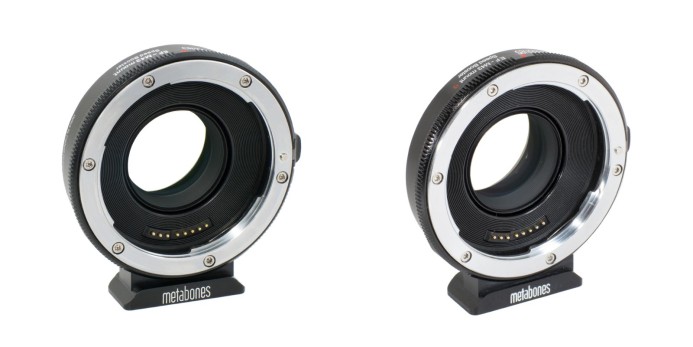For a Panasonic GH4 avid fan like us here on Al Caudullo Productions, this blog is just a gem to find! Special thanks to our friends Suggestionofmotion.com for such a helpful entry as this! And we’d love to share it with our fellow indie filmmakers out there. Below are the first few FAQs that we found so useful. The rest of the article can be read in their blog. The “Aaahs” begin now!
HOW DO I — USE (BLANK) LENS WITH THE GH4?
Answer: Identify the lens mount and find the appropriate adapter.
The GH4’s MFT lens mount is one of the most flexible mounts around, so if you have an obscure lens, chances are you’ll be able to be able to use it on the GH4 with the aid of a simple adapter.
Here is a simple 3-step process I use whenever I need to mount a new lens on the GH4:
- Identify the lens’ mount — Determine what type of mount the lens has so that you know what you’re working with.
- Use features such as brand name, model number, focal length, and maximum aperture as keywords to search for the lens (example: “Fotasy 35mm f/1.7“)
- Search for images to compare your against your search results (example: “Images: Fotasy 35mm f/1.7“
- Note the name of the lens mount (example: C-mount)
- Search for adapter options for the lens’ mount — Get an overview of the available adapter options (example: “C-mount MFT adapter“)
- Evaluate Options and Buy Adapter — Check prices, manufacturers, and read reviews to determine which adapter is the best option.
You’ve probably noticed that there are a lot of adapter options for most lens mounts. It’s important to know that not all adapters are created equal– there are a plethora of budget adapters out there, and while they’re cheap, they can also come with several issues (loose fit, no infinity focus, etc.).
After testing a wide range of lens adapters from various manufacturers over the years, here’s a shortlist of high-quality lens adapter manufacturers:
- Metabones — Lens adapters with solid build quality and innovative features.
- Ciecio7 — Precision-crafted lens adapters.
- Novoflex — Solid adapters, but can be somewhat pricey.
If you follow these instructions and cannot find an adapter for your lens, you might have found one of the rare exceptions where a lens adapter hasn’t yet been made for that mount.
HOW DO I — USE CANON EF LENSES ON THE GH4?
Answer: All you need to shoot with EF-mount lenses is the right adapter.
In the GH4’s early days, your options for shooting with EF-mount lenses were severely limited. While there were a few adapters out in the wild, none of them provided in-camera aperture control and the active adapters required an external power source.
Cut to: Present day — the sun has risen over the land and using EF-mount lenses on the GH4 is now relatively straightforward. Here are the top two adapters:
- Metabones Canon EF to MFT Smart Adapter — An active adapter that provides in-camera aperture control and enables a lens’ built-in image stabilization.
- Metabones Canon EF to MFT Speed Booster — Similar to the Metabones’ Smart Adapter (in-camera aperture control and image stabilization support), but also features custom-designed optics that widens the lens’ field of view and increases the lens’ brightness by 1 stop.
CAN I — USE CANON EF-S LENSES WITH THE METABONES SPEED BOOSTER?
Answer: No. Canon EF-S lenses are not compatible with the Metabones Speed Booster.
The rear of Canon’s EF-S lenses extend further than standard EF lenses and can come into contact with the Speed Booster’s optics. As a result, Canon EF-S lenses are not compatible with the Metabones Speed Booster.
However, it’s important to note that only Canon makes EF-S lenses. All third-party lenses use the standard EF-mount regardless of whether they are designed for full-frame or APS-C sensors. This means that the majority of third-party EF-mount lenses are compatible with the Speed Booster.
SHOULD I GET THE ORIGINAL EF SPEED BOOSTER OR THE “S” VERSION?
Answer: Both EF Speed Booster adapters (original and “S” version) are fully compatible with the GH4.
Not long after Metabones released the EF Speed Booster, they followed up with a new “S” version. Is your original EF Speed Booster now obsolete? What’s the difference? Which one should you get for the GH4?
Both adapters have the same custom-designed optics, provide in-camera electronic aperture control, and support lenses with built-in image stabilization. The key difference is that the “S” version is compatible with Olympus’ OM-D cameras, while the original version did not fit properly.
In order to slim the adapter down enough to fit Olympus’ OM-D cameras, Metabones removed the jog dial and external power capabilities from the “S” Speed Booster. As a result, the “S” Speed Booster is not compatible with cameras that have passive lens mounts, such as Blackmagic Design’s Cinema Camera.
The GH4 has an active lens mount, so it provides power and allows for in-camera aperture control with either adapter. Both adapters are the same price and deliver the same image quality, so you just need to decide whether you need an adapter that can be used with passive lens mounts (original version) or one that can be used on Olympus’ OM-D cameras (“S” version).




